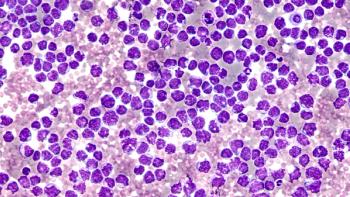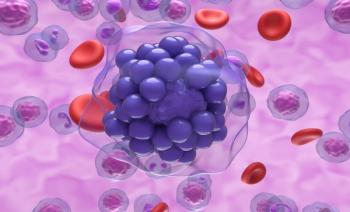
MASLD an Independent Risk Factor for Cardiovascular Disease
Key Takeaways
- MASLD is a significant risk factor for major cardiovascular events and all-cause mortality, with a rising global prevalence affecting 30% of adults.
- Cardiovascular disease is the leading cause of death in MASLD patients, with increased risk correlating with liver disease progression.
Real-world data suggest metabolic dysfunction-associated steatotic liver disease is also associated with higher all-cause mortality.
Metabolic dysfunction-associated steatotic liver disease (MASLD) is an independent risk factor for major cardiovascular events and for all-cause mortality, according to a new analysis of real-world population-based data from Germany.
The report highlights the importance of diagnosing MASLD in patients with elevated cardiovascular risk. It also shows the complexity of MASLD as an apparent multi-system disease. The report was
The number of patients worldwide with MASLD has risen steadily in recent years, noted corresponding author Yvonne Huber, MD, of the University Medical Center of the Johannes Gutenberg University Mainz, in Germany, and colleagues. One study found the disease is
Yet, cardiovascular disease is the most common cause of death among people with MASLD. A
Huber and colleagues wanted to get a better understanding of just how MASLD was impacting cardiovascular outcomes in the German population over a 5-year time horizon.1 They used data from the Gutenberg Health Study, which enrolled more than 15,000 patients between 2007 and 2012. A total of 14,575 met the new study’s inclusion criteria and were included in the analysis. Among the exclusion criteria was prior cardiac events.
The authors found that 1 in 5 patients in the database (21.7%) had elevated liver enzymes and that MASLD was present in 37% of participants. Previously known as non-alcoholic fatty liver disease, MASLD was defined in this study as having a positive fatty liver index (FLI) in the absence of relevant alcohol use.
The study looked in particular at major adverse cardiovascular events (MACE), which is a 3-point composite endpoint including acute myocardial infarction, stroke, and cardiovascular mortality. They also used the term “extended MACE” (eMACE) to represent cases in which a patient had a MACE and then had atrial fibrillation or pulmonary embolism.
Patients with positive FLI scores (≥60) were more likely to be male and older, the investigators found. They were also more likely to have metabolic and cardiovascular risk factors than patients with a negative FLI score (<30).
After 5 years, the investigators found 475 patients in the overall cohort (3.7%) developed 3-point MACEs. Patients with a positive FLI at baseline had a 5.7% MACE rate at that point, compared to 2.6% among patients with a negative FLI (P < .0001). A total of 577 patients (4.9%) developed eMACEs; however, among the subgroup of patients with MASLD, the rate of eMACE was higher, at 7.1% (P < .0001). The authors calculated that the presence of MASLD was tied to a 62.3% increase in the risk of developing a MACE and a 44.0% increased risk of developing an eMACE (P < .0001).
That increased risk also led to a significantly increased risk of mortality. The authors found that the hazard ratio for all-cause mortality among the MASLD population compared to the general population was 1.55 (P < .0001).
The authors said their data show that there is a connection between hepatic steatosis and MACE and eMACE, and that factors such as hypertension, dyslipidemia, and diabetes mellitus influence the connection. However, they said those do not appear to be the only factors at play.
“Hepatic steatosis, if present without these factors, represents a higher risk factor for MACE, which suggests that there might be different etiologies included in this sample leading to the changes in the liver that are associated with different risks for MACE,” they wrote.
They said their findings suggest that MASLD is a complex multi-system disease that affects not only the liver, but also the cardiovascular system. They said further longitudinal data over a longer time horizon would help further clarify the ways in which MASLD affects the cardiovascular system.
References
1. Huber Y, Hofmann L, Prochaska JH, et al. Incidence of major cardiovascular events in patients with metabolic dysfunction-associated steatotic liver disease in the general population. Eur J Heart Fail. Published online September 26, 2025. doi:10.1002/ejhf.70053
2. Younossi ZM, Golabi P, Paik JM, Henry A, Van Dongen C, Henry L. The global epidemiology of nonalcoholic fatty liver disease (NAFLD) and nonalcoholic steatohepatitis (NASH): a systematic review. Hepatology. 2023;77(4):1335-1347. doi:10.1097/HEP.0000000000000004
3. Mantovani A, Csermely A, Petracca G, et al. Non-alcoholic fatty liver disease and risk of fatal and non-fatal cardiovascular events: an updated systematic review and meta-analysis. Lancet Gastroenterol Hepatol. 2021;6(11):903-913. doi:10.1016/S2468-1253(21)00308-3
Newsletter
Stay ahead of policy, cost, and value—subscribe to AJMC for expert insights at the intersection of clinical care and health economics.













































